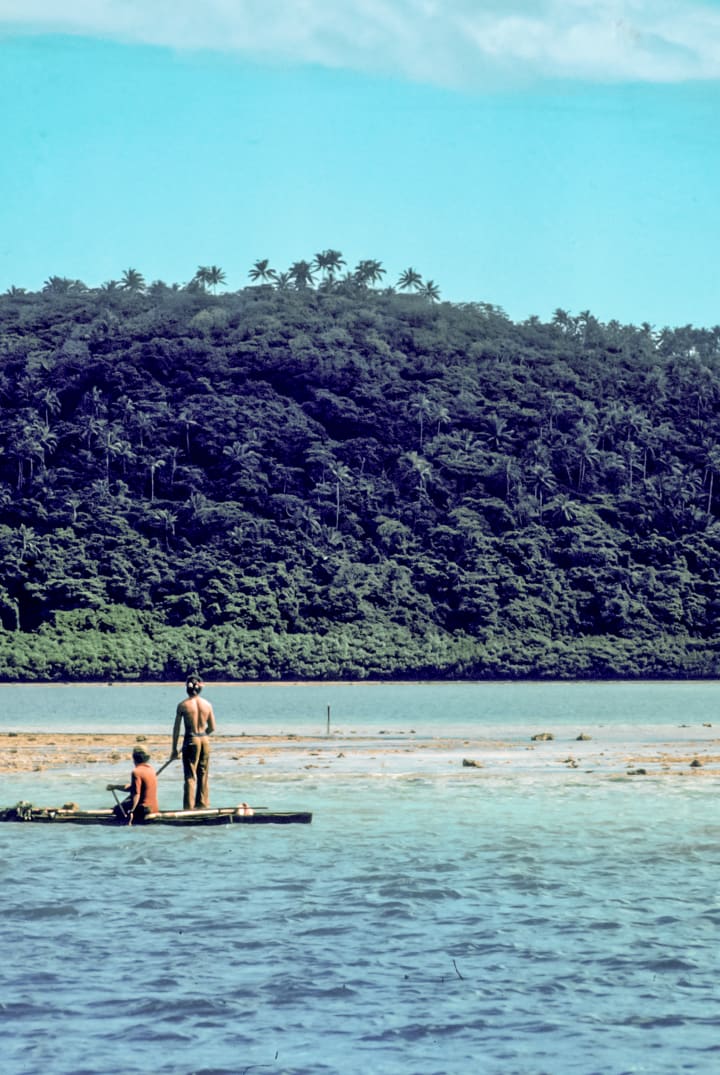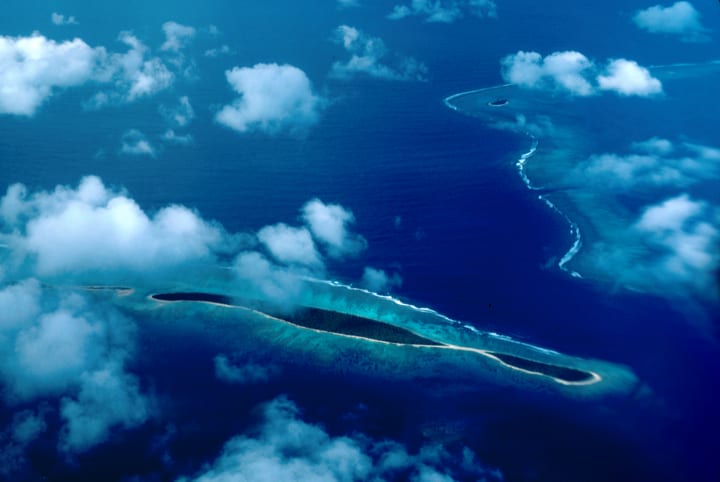Tonga before the blast
An idyllic place in the South Pacific

Smoke fills the air. Not the smoke of a volcanic eruption but the cookfires of hundreds of family huts. It was 1986, and I visited Tonga on an Earthwatch expedition. Our task was to map the growing fields identifying the types of vegetation–taro, plantains, papaya, and coconut made up some of the target crops. Our direct observation used ground-truth satellite imagery. Once identified on our maps, we transferred the information to the satellite photographs of the island. This, in turn, allowed researchers to extrapolate the key colors to other islands in the South Pacific.
Tonga, at the time, was an idyllic place. The people are friendly and eking out a subsistence living. Entire families would go fishing to bring home the day's catch and have it for dinner. Women and children collected shellfish, octopus, and sea cucumber in the shallows. Gardens and small farms were tended at home. Home was a corrugated shell with thatched roofs and dirt floors.

At night the air was filled with strains of a cappella voices from the church building carried across a silent lagoon. A blue glow coming out of almost every primitive home was a unique sight. The villagers watched television almost religiously every night. Being too remote for broadcast or cable, the residents rely on renting video cassettes.
The main town, Nukuʻalofa, the capital of Tonga, is located on the north shore of Tongatapu, in the southernmost reaches of the archipelago. It is one of 36 inhabited islands. Much of the commerce at the time was market-based. Local men and women would come to sit on a blanket on the ground and sell their produce, handicrafts, and other essentials. One notable exception is the video rental store was in a storefront and was always busy.

Blue lagoons and open ocean surround the landmass. A coral reef provides a perimeter to the shores. Not much past the edge of the coral, the sea drops off to a blue-black depth. I easily imagine a great white shark or giant octopus just beyond my sight.
The islands sit along The Tonga trench at nearly 11,000 meters deep. It is the deepest oceanic trench in the Southern hemisphere. It rivals the Mariana Trench, the deepest on Earth. The trench is an active tectonic feature, and Tonga is often the focus of frequent earthquakes. One minor earthquake did occur during my visit. I was shaken out of bed, thinking a truck had hit the building. Looking outside, I saw the water in the swimming pool sloshing out over its sides.

I haven't been back since, but I suspect that not much has changed.
The notable tectonic and volcanic activity is a dominant geologic feature of this area in the South Pacific Ocean.
The capital city was hit by a tsunami caused by the December 2021–January 2022 Hunga Tonga eruption.
The volcano of Hunga Tonga–Hunga Haʻapai also erupted in recent years. Once in 20099 and then again at the end of 2014 and into 2015.
NOAA, Public domain, via Wikimedia Commons
Besides the tsunami, the island will suffer from the effects of ash and acid rain for many months to come.
Matangi Tonga Online www.matangitonga.to is published by Vava'u Press Ltd. reported:
Tonga must urgently invest in disaster risk preparedness, Fekita tells Commonwealth
Tuesday, August 23, 2022 , Nuku'alofa, Tonga
Tonga faces continual challenges and is extremely vulnerable to the existential threat of climate change and climate disasters, the Minister for Foreign Affairs told Commonwealth counterparts in Canada yesterday.
“We must urgently invest in more disaster risk preparedness,” Hon. Fekita 'Utoikamanu told the CPA Small Branches Network in Halifax, Canada.
She was speaking on a panel, addressing Disaster Risk Preparedness for Small Jurisdictions, on 22 August.
“Our reality as small jurisdictions, is that we continue to have limited means and capacity to respond to and manage the risks of the ever-accelerating climate change and disasters.”
The Tonga Government has introduced policies to proactively address disaster management in response, she said. Parliament has also enacted various laws.
About the Creator
Jim DeLillo
Jim DeLillo writes about tech, science, and travel. He is also an adventure photographer specializing in transporting imagery and descriptive narrative.






Comments
There are no comments for this story
Be the first to respond and start the conversation.